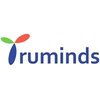
i
Truminds Software
Systems
Filter interviews by
Truminds Software Systems Interview Questions and Answers
18 Interview questions
Threads in operating system are lightweight processes that share the same memory space and resources.
Threads allow for concurrent execution within a single process
Threads share the same memory space, allowing for efficient communication and data sharing
Threads can be created and managed by the operating system or by the application itself
Examples of threading models include user-level threads and kernel-level thre...
Object-oriented programming paradigm where data and behavior are encapsulated within objects
Encapsulation: bundling data and methods that operate on the data within a single unit
Inheritance: ability for a class to inherit properties and behavior from another class
Polymorphism: ability for objects of different classes to respond to the same method call
Print numbers in a tree format
Use recursion to print numbers in a tree structure
Start with the root node and recursively print child nodes
Use indentation to represent levels in the tree
Example: 1 --2 ----3 --4
4G attach call flow involves multiple steps for a device to connect to the network.
Device sends attach request to the network
Network validates the request and assigns temporary identity (TMSI)
Network sends attach accept message to device
Device sends attach complete message to confirm attachment
Network updates location of device in Home Location Register (HLR)
Handover scenarios involve transferring a call or data session from one cell to another in a seamless manner.
Handover can be triggered by factors like signal strength, congestion, or user mobility.
Types of handover include hard handover (disconnecting from one cell before connecting to another) and soft handover (connecting to multiple cells simultaneously).
Handover can occur within the same network (intra-cellula...
Join queries are used to combine data from multiple tables based on a related column between them.
Use JOIN keyword to combine tables based on a common column
Specify the columns to select from each table
Use WHERE clause to specify the join condition
Threading is a programming technique that allows multiple tasks to run concurrently within a single process.
Threading allows for parallel execution of tasks within a program.
Threads share the same memory space, allowing for efficient communication and data sharing.
Examples of threading in programming languages include Java's Thread class and Python's threading module.
Program to sort an array of strings in ascending order
Use a sorting algorithm like bubble sort, selection sort, or merge sort
Compare adjacent elements and swap them if they are in the wrong order
Repeat this process until the array is sorted
Program to find the sequence order of a number
Create an array to store the sequence order
Iterate through the numbers from 1 to the given number
Check if each number is divisible by the given number
If divisible, add it to the sequence order array
Return the sequence order array
A linked list is a data structure that consists of a sequence of nodes, each containing a reference to the next node.
Each node has a data field and a next field that points to the next node
Insertion and deletion can be done efficiently
Traversal starts from the head node and continues until the end node is reached
Truminds Software Systems Interview Experiences
19 interviews found
Simple map question basically it was frequency based sorting
(2 Questions)
- Q1. Explain about oops
- Ans.
Object-oriented programming paradigm where data and behavior are encapsulated within objects
Encapsulation: bundling data and methods that operate on the data within a single unit
Inheritance: ability for a class to inherit properties and behavior from another class
Polymorphism: ability for objects of different classes to respond to the same method call
- Q2. Tell me about the threads in Operating system
- Ans.
Threads in operating system are lightweight processes that share the same memory space and resources.
Threads allow for concurrent execution within a single process
Threads share the same memory space, allowing for efficient communication and data sharing
Threads can be created and managed by the operating system or by the application itself
Examples of threading models include user-level threads and kernel-level threads
Skills evaluated in this interview
(2 Questions)
- Q1. What is threading
- Ans.
Threading is a programming technique that allows multiple tasks to run concurrently within a single process.
Threading allows for parallel execution of tasks within a program.
Threads share the same memory space, allowing for efficient communication and data sharing.
Examples of threading in programming languages include Java's Thread class and Python's threading module.
- Q2. 7 layer of networking
- Ans.
The 7 layers of networking refer to the OSI model, which is a conceptual framework used to understand how networks operate.
Physical layer: Deals with physical connections and hardware (e.g. cables, switches)
Data link layer: Manages data transfer between devices on the same network (e.g. Ethernet)
Network layer: Handles routing and forwarding of data packets (e.g. IP)
Transport layer: Ensures data is delivered reliably an...
(2 Questions)
- Q1. Prev salary and prev experience(even if you fake it you can pass interview, he is dumb about software development)
- Q2. What is your expectation
- Ans.
My expectation is to work in a challenging environment where I can utilize my skills to contribute to the success of the team and company.
Expectation to work on complex projects that require problem-solving skills
Desire to collaborate with talented team members to achieve common goals
Opportunity for continuous learning and professional growth
Expectation for clear communication and feedback from management
Interview Preparation Tips
They don't ask any DSA problems as they don't know about any coding platform (all are dumb )
good for those who have good communication skills in telling a small change a big change in code.
if you can inflate a task, you are going to join best company. (they don't need good code writers and best mf)
Skills evaluated in this interview
I applied via Naukri.com and was interviewed in Mar 2024. There was 1 interview round.
(2 Questions)
- Q1. Explain about 4g attach call flow
- Ans.
4G attach call flow involves multiple steps for a device to connect to the network.
Device sends attach request to the network
Network validates the request and assigns temporary identity (TMSI)
Network sends attach accept message to device
Device sends attach complete message to confirm attachment
Network updates location of device in Home Location Register (HLR)
- Q2. Explain about handover scenarios
- Ans.
Handover scenarios involve transferring a call or data session from one cell to another in a seamless manner.
Handover can be triggered by factors like signal strength, congestion, or user mobility.
Types of handover include hard handover (disconnecting from one cell before connecting to another) and soft handover (connecting to multiple cells simultaneously).
Handover can occur within the same network (intra-cellular han...
I applied via Recruitment Consulltant and was interviewed in Nov 2023. There were 2 interview rounds.

(1 Question)
- Q1. Simple lte related question.
Interview Preparation Tips
60 min OA with general aptitude and quant based questions. The time provided was the main challenge for the test
Interview Preparation Tips
I applied via Campus Placement and was interviewed in Mar 2023. There were 4 interview rounds.

Computer Networks, SQL, DBMS, aptitude questions on trains, boats , profit and loss. 2 coding questions. Total duration was 1.5 hrs.
(1 Question)
- Q1. Questions based on projects and certifications mentioned in the resume. OOPs Time complexity based questions, basic algorithm logics like dijkstra's , sorting algorithms . Question in OS like threads and ...
(1 Question)
- Q1. Reversing a string, writing sql queries, how does fetching of information from web takes place. Why you want to join Truminds?

It placed in hackerRank.question difficulty level was medium.
(1 Question)
- Q1. The difficulty depends upon who is taking your interview. But mostly asked questions were related to string and hashmap.
(1 Question)
- Q1. It was more like a little bit technical and hr round. Mostly talk about personal profile like education,family background, hobbies and etc.

DSA and core CSE, test duration 1 hr , hacker rank test
(1 Question)
- Q1. What is OS and what do you know about it
- Ans.
OS stands for Operating System. It is a software that manages computer hardware and provides services for computer programs.
OS acts as an intermediary between the computer hardware and software applications
It manages resources such as memory, processors, devices, and file systems
Examples of OS include Windows, macOS, Linux, and Unix
Interview Preparation Tips
Skills evaluated in this interview
I applied via Campus Placement and was interviewed before Oct 2022. There were 4 interview rounds.

It was a MCQ + Coding test
(2 Questions)
- Q1. Questions on DSA
- Q2. Questions on CS Fundamentals
(2 Questions)
- Q1. Questions on Linux commands
- Q2. Questions related to oops and CS is
I applied via Campus Placement and was interviewed before Sep 2023. There were 2 interview rounds.
It was around 2 hrs with 2 coding questions and some mcq questions on fundamentals
(2 Questions)
- Q1. Print some numbers in a tree format
- Ans.
Print numbers in a tree format
Use recursion to print numbers in a tree structure
Start with the root node and recursively print child nodes
Use indentation to represent levels in the tree
Example: 1 --2 ----3 --4
- Q2. Factorial of a number, both iterative and recursive
- Ans.
Factorial of a number can be calculated using both iterative and recursive methods.
Iterative method involves using a loop to multiply numbers from 1 to n.
Recursive method involves calling the function with n-1 until n reaches 1.
Example: Factorial of 5 using iterative method: 5! = 5*4*3*2*1 = 120
Example: Factorial of 5 using recursive method: 5! = 5 * 4!
Example: Factorial of 4 using recursive method: 4! = 4 * 3!
Skills evaluated in this interview
Top trending discussions






Truminds Software Systems Interview FAQs
Some of the top questions asked at the Truminds Software Systems interview -
The duration of Truminds Software Systems interview process can vary, but typically it takes about less than 2 weeks to complete.
Tell us how to improve this page.
Truminds Software Systems Interviews By Designations
- Truminds Software Systems Software Developer Interview Questions
- Truminds Software Systems Software Engineer Interview Questions
- Truminds Software Systems Sde1 Interview Questions
- Truminds Software Systems Senior Software Development Engineer Interview Questions
- Truminds Software Systems Senior Development Engineer Interview Questions
- Truminds Software Systems Telecom Engineer Interview Questions
- Truminds Software Systems Senior Software Engineer Interview Questions
- Truminds Software Systems Intern Interview Questions
- Show more
Interview Questions for Popular Designations
- Software Developer Interview Questions
- Associate Interview Questions
- Software Engineer Interview Questions
- Sales Executive Interview Questions
- Consultant Interview Questions
- Associate Software Engineer Interview Questions
- Java Developer Interview Questions
- Senior Software Engineer Interview Questions
- Show more
Overall Interview Experience Rating
based on 19 interview experiences
Difficulty level
Duration
Interview Questions from Similar Companies
Truminds Software Systems Reviews and Ratings
based on 102 reviews
Rating in categories
|
Software Engineer
117
salaries
| ₹3.9 L/yr - ₹16.6 L/yr |
|
Senior Software Engineer
104
salaries
| ₹7.2 L/yr - ₹23 L/yr |
|
Software Developer
45
salaries
| ₹8.9 L/yr - ₹16.6 L/yr |
|
Software Development Engineer
43
salaries
| ₹6 L/yr - ₹17 L/yr |
|
Technical Lead
42
salaries
| ₹13 L/yr - ₹28 L/yr |

PC Solutions

JMR Infotech

RNF Technologies

Ahana Systems & Solutions
- Home >
- Interviews >
- Truminds Software Systems Interview Questions












